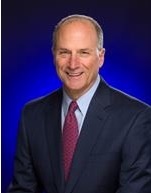This is a guest post written by Barry Mitsch.
 It is becoming clear that the scientific community is going to be challenged by the new administration in Washington. Appointees to agencies funding scientific research have expressed disdain for findings that do not fit their political agenda. It is the responsibility of everyone who values scientific research to show the value science plays in future advancements that contribute to economic growth and improved quality of life.
It is becoming clear that the scientific community is going to be challenged by the new administration in Washington. Appointees to agencies funding scientific research have expressed disdain for findings that do not fit their political agenda. It is the responsibility of everyone who values scientific research to show the value science plays in future advancements that contribute to economic growth and improved quality of life.
There are many ways to project a message in today's digital world. It is easy to send a text or a tweet, author a blog, or submit a paper. But the real power of communicating an idea still resides in personal contact and sharing passion with both large and small groups who can then amplify the message through multiple mediums. Regardless of their field of expertise, now is the time for scientists to be speaking to schools, civic clubs, public meetings, and forums of all sizes.
A powerful scientific message must be concise and relatable to a general audience. Forget all the complicated data. Drill down to what is practical and makes sense to the person on the street. A good example of a simple scientific presentation is the TED talk delivered by Al Gore in February of 2016 on the status of climate change remediation efforts.
There are three techniques that Gore uses that any scientist can incorporate into a speech to a general audience.
1) Set an agenda
First, notice how he sets a very clear agenda that makes it easy to follow his content. He states that his talk will address three questions: Must we change? Can we change? And will we change? This gives the audience a roadmap and a clear identification of the topic categories in his speech. As he transitions into the segments of the presentation, he reminds the audience of which question he is addressing.
This pattern of "threes" is simple and can form the framework of any scientific talk. For example, you could first introduce the challenge your research is addressing with emphasis on how this has an impact on day-to-day life, then segue into what you are discovering and what these discoveries may mean, and finally talk about the long range impacts of the research on the general public.
2) Use metaphors
The second technique that Al Gore employs is the frequent use of metaphors to simplify his concepts and make them more relatable to a broad audience. For example, when he talks about the amount of energy released through burning carbon fuels, he equates it to 400,000 Hiroshima bombs going off each day. As gruesome as that sounds, people vividly know what the Hiroshima explosion looks like. When he talks about the potential for rapid adoption of new alternative energy technologies, he relates it to the speedy advancement of cell phone use. And when he talks about "grid parity" and the openness of markets to alternative energy, he uses the relationship of ice and water to emphasize the small difference in a frozen market and one with liquid capital.
Scientist need to find metaphors that make their concepts relevant to a lay audience. How can you relate technical topics to something familiar and understandable?
3) Weave in personal stories
Finally, Gore uses personal stories. He finishes his speech recalling his experience as a 13-year-old listening to John F. Kennedy challenge the country to land a man on the moon. Personal stories can be exceptionally powerful for scientists reaching out to non-technical audiences. Stories promote empathy and can create an intimate connection that makes their presentation more memorable.
So the challenge is for scientists to use public speaking to launch a massive public relations campaign. It can be simple. Compartmentalize your research into three parts that tell a story. Look for metaphors and examples that make it easy for anyone to understand the importance of your work. And don't be afraid to bring your personal experiences into the presentation.
Barry Mitsch, of the Pyramid Resource Group, has been conducting presentation skills workshops for more than 25 years and specializes in working with scientists and engineers. He has worked with individuals and groups using video-based programs, classroom workshops, and virtual coaching. He holds a Master's of Science in Public Health and his research was in the field of radiation physics. He provides communication coaching to Sigma Xi members. If you have a question or comment about this post, you may post it below or email Lisa Mumma, interim manager of communications, at lmumma@sigmaxi.org.